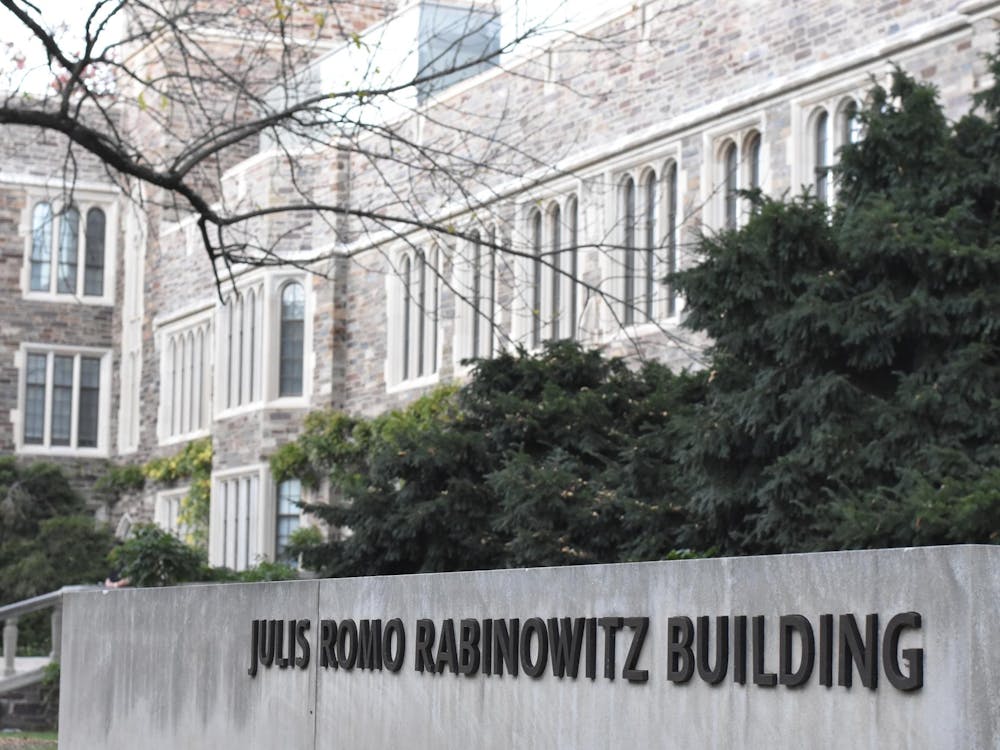In his column last Friday, Brendan Carroll asked Princeton students to ignore the Queer the Census campaign, which asks for the inclusion of questions on lesbian, gay, bisexual and transgender identities on the census and the related American Community Survey. It’s a pity Carroll didn’t speak to me or my co-author, Brenda Jin ’10, before responding to our column, as each objection he raises is irrelevant or based on misinformation.
The most egregious mistake in Carroll’s column is the claim that the “sex” question on the census is “a completely intelligible question about anatomy.” The Census Bureau disagrees. It justifies its question on sex or gender by mentioning that “many federal programs must differentiate between males and females,” and it stresses fair housing, educational opportunity and civil rights, all of which are matters of social roles — of “gender” — not anatomy. If that doesn’t have you convinced, note that the Census Bureau encourages transgender and intersex people to check “male” or “female” based on their identification, rather than their anatomy or legal documents.
Carroll uses “intersex” as an example of an “identification” that doesn’t belong on the census. But intersex refers to “conditions in which a person is born with a reproductive or sexual anatomy that doesn’t seem to fit the typical definitions of female or male,” so if the question were about anatomy, intersex would have to be included. Of course, it shouldn’t be about anatomy — it should be about categories of identity that affect people’s lives, including transgender (the umbrella term for people whose gender doesn’t match their assigned sex), genderqueer, intersex, male and female.
When arguing about the census, people often seek recourse to the Constitution’s supposedly limited vision of what the census is. In this vein, Carroll claims inclusion of LGBT identity would contradict the Constitutional purpose of the census: to provide the necessary data for congressional redistricting. Let’s take a step back. The text of the Constitution calls for an “enumeration” every 10 years to determine the apportionment of representatives to the states according to population. State apportionment isn’t the same as redistricting — in fact, the Constitution never mentions congressional districts. If the Census Bureau were to naively follow the text of the Constitution, it would only gather population data by state, not locally.
Carroll argues that the “race” question is asked to prevent racial gerrymandering. This is certainly one of the reasons race is asked today, but the census has asked about race since 1790, long before the 1965 Voting Rights Act forbade gerrymandering for the purpose of marginalizing ethnic minorities. Thus, the census has always been a means of gathering demographic information. This isn’t just limited to race: The census has always asked about gender and age, and it currently asks about relationships and home ownership. None of these questions affects congressional representation. The Census Bureau explains that data on race “is a critical factor in the basic research behind numerous policies.” The same statement would apply to LGBT identity.
Privacy is another issue that Carroll brings up. Let me be clear on this: It is illegal for the Census Bureau to release personal information to anyone before 72 years have passed. Census workers who break confidentiality face fines up to $250,000 and imprisonment up to five years. Furthermore, 72 years is a number that can be changed; alternatively, the “sexual orientation” part of the form could simply be kept confidential forever.
Carroll argues that it’s impossible for parents to know the sexual orientation of young children. I agree. I do think that “no response” should be an option. Carroll’s concerns about privacy and young children have one thing in common: They are questions of implementation, not reasons to oppose the campaign.
The Queer the Census campaign isn’t about the “interesting question” of how many LGBT people there are in the United States. It’s about understanding the inequalities that LGBT people face and where they live, in order to meet their needs. The census represents a unique opportunity to collect data on the communities where LGBT people live; we are also asking for inclusion on the American Community Survey because it’s the only way to get government-recognized data on LGBT quality of life. The ACS — which Carroll doesn’t address — asks qualitative questions on topics such as income, housing and education. Unlike the census, it is a sample-based survey that relies on statistical approximation. Because the census and ACS provide different kinds of data, both should ask about LGBT identity.
There is one more claim in Carroll’s piece that has me puzzled: “LGBT persons are already highly visible, highly successful in their fields and doing a fine job of advocating for their political agenda.” Obviously there are famous and successful LGBT people, and gay-friendly policies in the workplace are on the rise. But according to a 2009 study, 51 percent of gays are closeted to most of their coworkers, perhaps out of fear of discrimination, harassment or a pink slip that can’t be ignored. Another survey indicates that 26 percent of transgender workers have lost jobs because of their identity and that workplace harassment is ubiquitous. It’s legal in most states to fire LGBT people (or deny them housing) just because they are LGBT. As LGBT people across America would testify, these are the “brute facts” — the Census Bureau needs to ask about LGBT identity so that America can understand and begin to remedy these inequalities.
Johannes Muenzel is a German major from Plainsboro, N.J. He can be reached at jmuenzel@princeton.edu.








